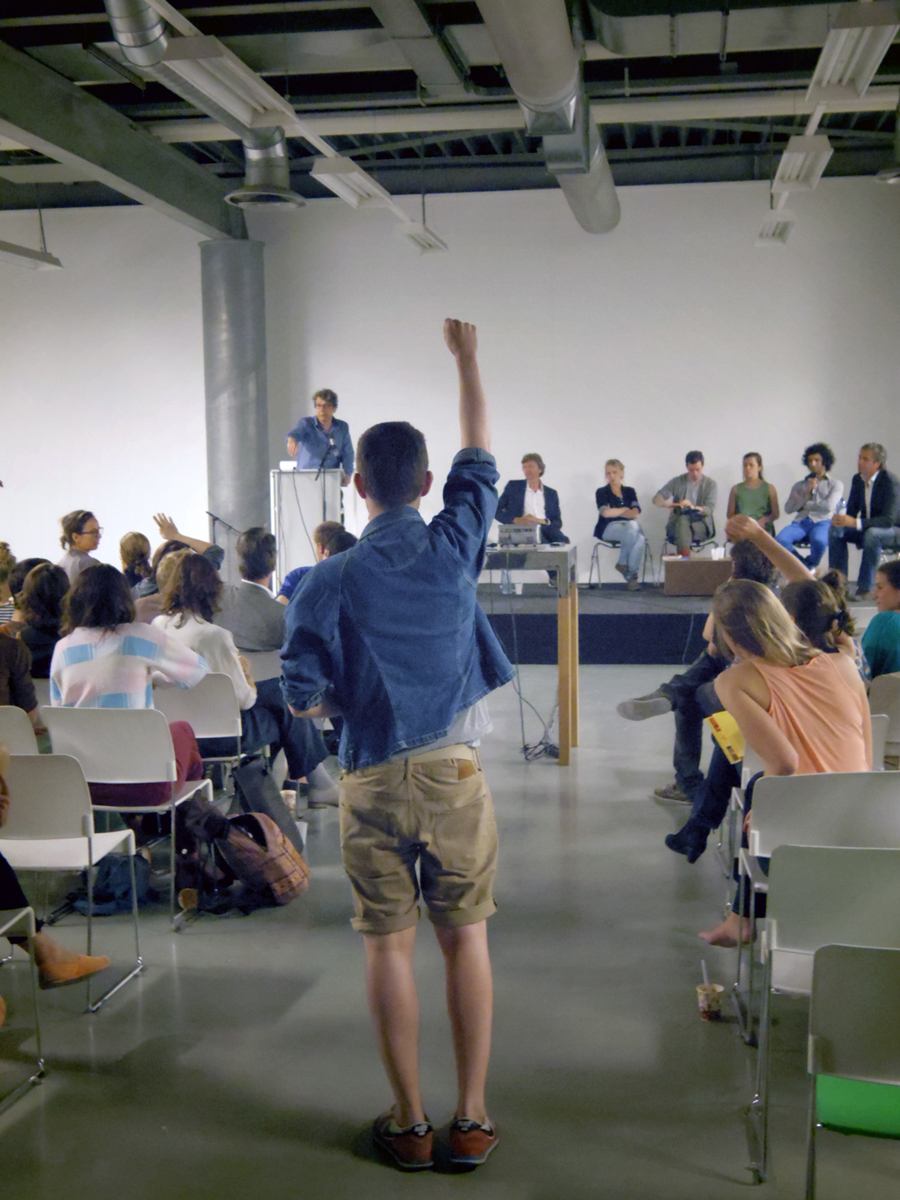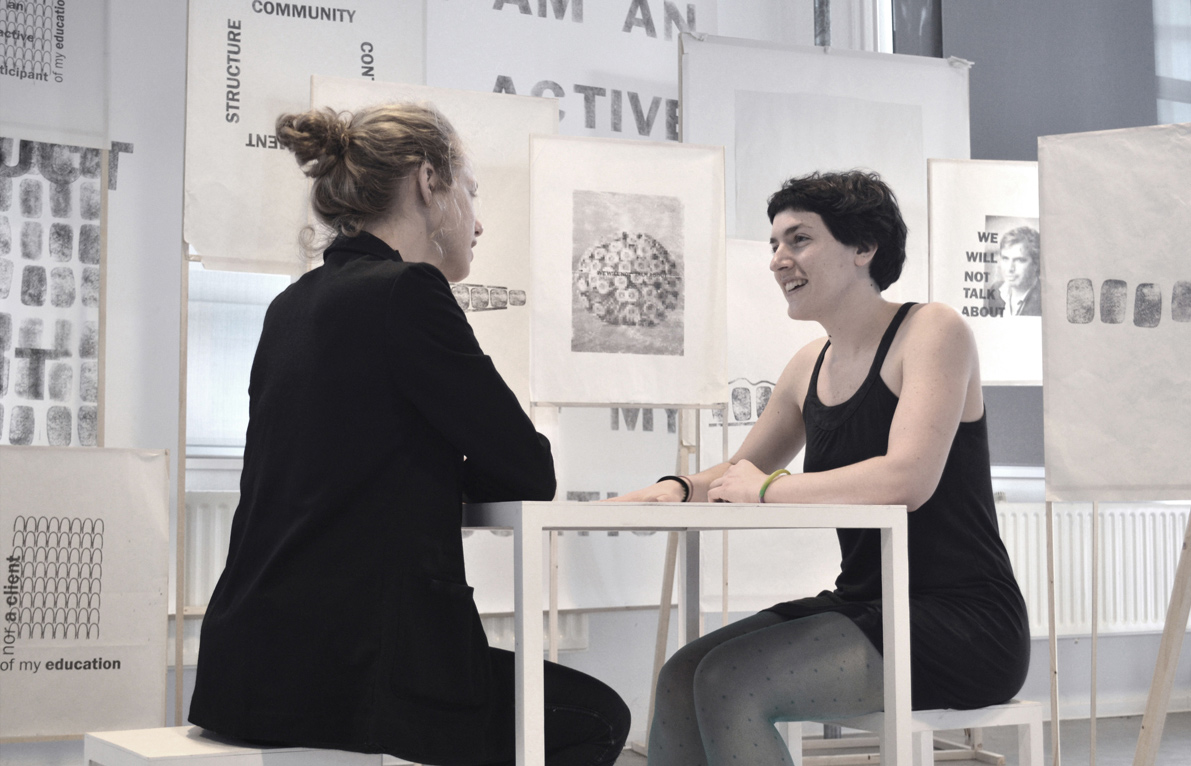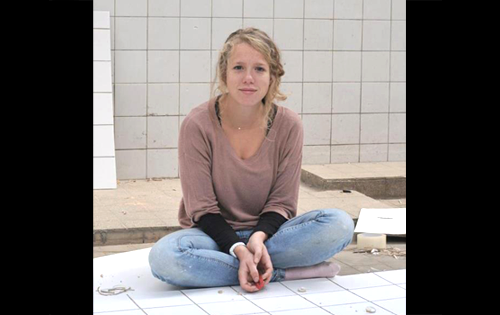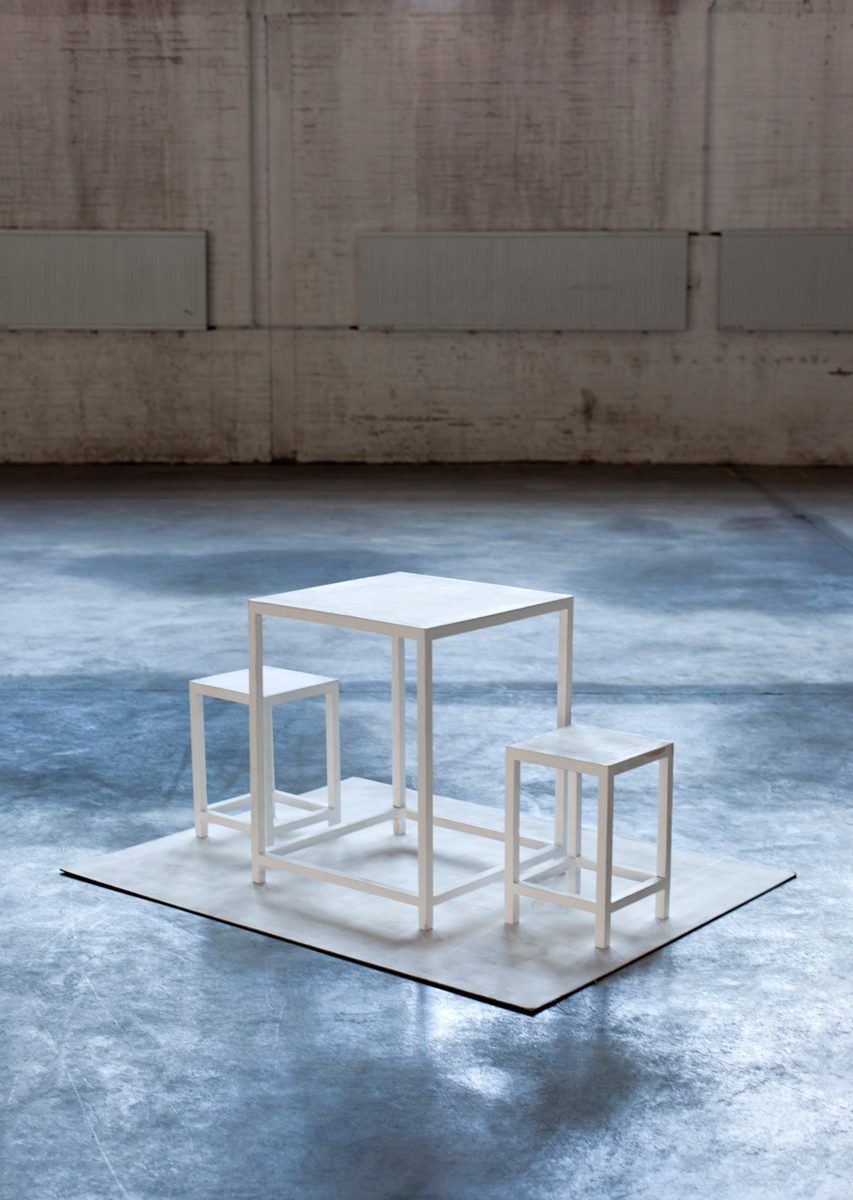-
License to Think
Interview with
Eugenie deLariviere
By Elvia Wilk
What do students want? During her final year of her masters programme at the Design Academy in Eindhoven, Eugenie deLariviere was faced with an institutional upheaval that prompted her to reconsider her entire education.
Eugenie deLariviere’s masters thesis project, titled “My Education Frustration”. (All images courtesy Eugenie deLariviere)
-
Your 2013 thesis project for your masters in Contextual Design at the Design Academy in Eindhoven was called "My Education Frustration". What was the situation at the school that prompted you to focus on education?
The Design Academy had been trying to reinvent its own system for several years. Nobody could agree on how to do this, which led to the resignation in June 2012 of the heads of three masters programmes. Part of the problem was the very hierarchical form of organisation that was developing – partially due to decisions the school was making, but also dictated by the Bologna Process, a system of standardisation that’s pushing a lot of schools throughout Europe in the same direction. Decisions about education are being made at governmental level; we have to decide how to adapt without losing our own perspective.

“This is (not) a manifesto” is a visual project by deLariviere expressing the opinions that arose on all sides following “Dutch Resign Week,” the week in July 2012 when three heads of the masters program at the Design Academy Eindhoven resigned.
-
»We need to be able to trespass out of our own disciplines.«
The student perspective gets lost because of institutional hierarchy, but is it also because students don’t feel accountable to the longevity of an institution they’re only a part of for a few years?
Yes, this was part of my struggle in getting students involved. It’s true that they don’t feel very concerned – but also, until then, they’d just never been asked what they thought. Change is about rethinking the structures that include or exclude them from decisions about their own education. In general we need a system change.
What are the main things that need to be overhauled?
One of the main things is the diploma, this idea that some knowledge can be accredited and some cannot. How do you differentiate? Today, when you’re looking for a job, it’s more about how personalities work together. We have to think in formations. Is the name of the school on the diploma important? For designers and architects it may be less complicated, because we can show our portfolios, but for education overall the diploma is really outdated.
But aren’t architects and designers the ones who need the most rigorous accreditation process, because they’re liable for designing buildings and objects requiring real technical, safety, and environmental parameters?
Yes, definitely, we can’t lose the technical part. But there’s a whole other side to architecture and design. Both are moving out of their fields – they’re not so much about buildings or objects anymore, but something much bigger. How can you accredit that type of knowledge?
Soft skills are much harder to transmit and measure than hard skills. What did you learn about teaching and learning them during your research?
That you learn the most from your peers: whether it’s one class having an idea together, or a whole generation sharing values, we learn from each other. It’s not a new idea, but it made me realise that sharing soft skills with each other depends on having a shared space. You need spaces to form groups of people, and groups of people to make education happen.
-


Is it possible for an established institution to adapt by creating new models, or is it necessary to go beyond or outside the institution to really create something new?
What I found is that new schools and temporary programmes die if they don’t get institutionalised. If they’re not accredited people don’t trust them – even if it’s a great idea and everyone is enthusiastic. Some programmes, such as Department 21 at the Royal College of Art in London, started well, but because they weren’t incorporated into their own institutions, died out. Yet The School of Walls and Space at the Royal Academy of Visual Arts in Copenhagen was also self-initiated, but in the end the academy assigned a budget and it became a proper department. The academy was smart, realised that something was happening within itself and gave it a chance.
After sending a letter to Eindhoven’s creative director outlining her concerns‚ deLariviere held open discussions with students and faculty‚ and staged student interviews.
-
What about at Eindhoven? How receptive was the faculty to your initiative, and were there long-term outcomes?
I sent a letter to the school creative director, Thomas Widdershoven, explaining my complaints. Then we had a meeting and together organised a debate. All the mentors from the school were invited, but the students were the ones speaking. We also invited Timo de Rijk, who had published a very critical article on the academy. That evening led to other evenings where students were invited to speak about their projects, and so the perspective started to change a bit.
Is this resistance to including student voices because it seems like too much work to involve them?
Administrations think it will be more work, but they also think it’s not worth it, that students don’t have interesting things to say.
»Change is about re-thinking the structures that include or exclude students from decisions about their own education.«
The hierarchy is clear – it’s like if you don’t have your diploma yet, you’re not able to think. At the end of the first debate we organised, the creative director of the school came up to me and said, “I didn’t know students had so much to say! They’re actually smart!” I thought, come on, you just became the head of one of the greatest design schools in Europe, and you don’t believe in the intelligence of your students?!
Is design education unique or should everything be interdisciplinary?
We need to be able to trespass out of our own disciplines. But we also need to be experts in our own area. It’s not that we have to be designers plus something else; it’s that we need to collaborate and make connections. Students very often have the drive to look into another subject, but don’t have access to the relevant knowledge within their institutions.
-

Eugenie deLariviere is a young designer interested in how students can be the motor of active changes within their education. In her research she looks at how can educational systems be rethought from within, focusing on putting forward the vision and interests of the ‘new generation’. She has moderated, co-organised and participated in various symposiums on the future of design, and is now a mentor at the Rietveld Academy.
eugeniedelariviere.com
What were you expecting from your education when you began?
I was expecting to become a designer making objects, and then midway through I realised what I was going to do with my life wasn’t what I was being taught. I really started questioning what I wanted out of it: to rethink what design could be. I was concerned that schools weren’t changing with the definition of the profession in the outside world. During my masters, several students were older than me, had experience and were ready to take on work that was important to them. I was still in this student-school relationship I’d been in since I was three! In my last year of study I realised I didn’t care about getting the diploma anymore.

Believing education is about shared space, her thesis project focused on forging and documenting spaces for interaction. (Photo: Lonneke van der Palen © Design Academy Eindhoven)
-
Search
-
FIND PRODUCTS
PRODUCT GROUP
- Building Materials
- Building Panels
- Building technology
- Façade
- Fittings
- Heating, Cooling, Ventilation
- Interior
- Roof
- Sanitary facilities
MANUFACTURER
- 3A Composites
- Alape
- Armstrong
- Caparol
- Eternit
- FSB
- Gira
- Hagemeister
- JUNG
- Kaldewei
- Lamberts
- Leicht
- Solarlux
- Steininger Designers
- Stiebel Eltron
- Velux
- Warema
- Wilkhahn
-
Follow Us
Tumblr
New and existing Tumblr users can connect with uncube and share our visual diary.
»Architecture starts when you carefully put two bricks together. There it begins.«
Ludwig Mies van der Rohe
Keyboard Shortcuts
- Supermenu
- Skip Articles
- Turn Pages
- Contents


